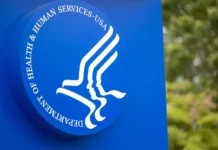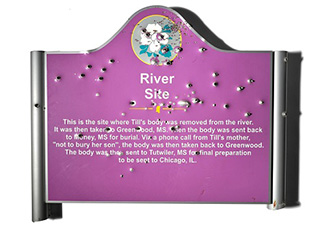
By Julie Appleby, KFF Health News
Don Smith remembers the moment he awoke in an intensive care unit after 13 days in a medically induced coma. His wife and daughter were at his bedside, and he thought it had been only a day since he arrived at the emergency room with foot pain.
Smith said his wife “slowly started filling me in” on the surgery, the coma, the ventilator. The throbbing in his foot had been a signal of a raging problem.
“When you hear someone say a person died of infection, that’s sepsis,” said Smith, 66, of Colorado Springs, Colorado, who went to the ER shortly before Christmas 2017. Ultimately, he spent almost two months in the hospital and a rehab center following multiple surgeries to clear the infected tissue and, later, to remove seven toes.
Sepsis, the body’s extreme response to an infection, affects 1.7 million adults in the United States annually. It stems from fungal, viral, or bacterial infections, similar to what struck Madonna this year, although the singer never said whether she was diagnosed with sepsis. Treatment delays of even a few hours can undermine a patient’s chance of survival. Yet sepsis can be difficult to diagnose because some patients don’t present with common symptoms like fever, rapid heart rate, or confusion.
A Biden administration rule, finalized in August, ups the ante for hospitals, setting specific treatment metrics that must be met for all patients with suspected sepsis, which could help save some of the 350,000 adults who die of infections annually. Children, too, are affected, with some estimates that 75,000 are treated each year for sepsis and up to 20% of them die. Hospitals that fail to meet the requirements risk losing potentially millions in Medicare reimbursement for the year.
Still, because the rule applies broadly, it has triggered pushback for its lack of flexibility.
Efforts to reduce sepsis deaths are welcome, but “where it gets controversial becomes ‘Is this the best way to do it?’” said Chanu Rhee, an infectious disease physician and associate professor of population medicine at Harvard Medical School.
The approach requires that blood tests be done quickly to look for markers that may indicate sepsis. Also, the measures say antibiotics must be started within three hours of identifying a possible case. The quality measures, called the Severe Sepsis/Septic Shock Early Management Bundle, also call for certain other tests and intravenous fluids to keep blood pressure from dropping dangerously low.
In the proposed rule, which was issued in May, Medicare regulators wrote that the treatments have resulted in “significant reductions in hospital length of stay, re-admission rates and mortality,” since the guidelines were initiated in 2015 under a requirement that hospitals simply report whether they were following them or not.
“These are core things that everyone should do every time they see a septic patient,” said Steven Simpson, a critical-care physician, a professor of medicine at the University of Kansas, and the chairman of the Sepsis Alliance, an advocacy group backed by individual, government, and health industry funding.
The final rule builds on that earlier effort. Nationwide, an average of 57% of patients received care that met the guidelines in 2021, with the most compliant averaging 80%, according to the Biden administration.
But, starting in fall 2024, hospitals must move beyond simply reporting on the measures and meet the specific treatment benchmarks, which will be added to Medicare’s Hospital Value-Based Purchasing Program.
“Before, even if you were reporting 0% compliance, you didn’t lose your money. Now you actually have to do it,” said Simpson.
Failing to meet those measures and other patient-safety standards could be costly: Smaller hospitals could lose “hundreds of thousands” of dollars in Medicare reimbursements annually; for large institutions, “it’s in the millions-of-dollars range,” said Akin Demehin, senior director of quality and patient safety policy at the American Hospital Association.
The hospital association opposed the final rule, writing in a June letter to the Centers for Medicare & Medicaid Services that the recommended treatments had not kept up with evolving science and that their focus on quick antibiotic administration for all suspected cases “has the high potential to lead to excessive use.” That could fuel antibiotic resistance.
Similar concerns have been cited by other professional medical associations, including the Infectious Diseases Society of America. In a 2020 paper, it called for modifying the metrics to target only patients with septic shock, the most serious form of the condition, rather than all suspected sepsis cases. The society also argued that physicians need more flexibility.
What’s more, there is debate over whether broadly implementing the treatment regimen will save lives.
Rhee raised this issue early this year in JAMA. In an opinion piece he co-authored, Rhee cited four studies, including one he led, showing broad-spectrum antibiotic use increased after the sepsis bundle was introduced eight years ago, yet there was little or no change in outcomes for patients.
“Unfortunately, we do not have good evidence that implementation of the sepsis policy has led to an improvement in sepsis mortality rates,” he said.
Another study offers a different view. It showed that adhering to the treatments reduced deaths by about 5.7% among patients who received them. Medicare officials cited the study and its results in their proposal for the rule.
Rhee is unconvinced that the treatment protocols alone led to the drop.
Simpson, at the Sepsis Alliance, said there is enough evidence that the effort to follow the treatment standard resulted in improvements, and he is looking forward to more.
“It is quite clear that this works better than what was present before, which was nothing,” Simpson said. If the current sepsis mortality rate could be cut “by even 5%, we could save a lot of lives.”
All those involved agree that awareness is crucial, not only on the part of medical teams, but among patients, too. Crystal Waguespack, 41, a nurse in Baton Rouge, Louisiana, said she knew about sepsis but didn’t apply that to her own symptoms when she began experiencing severe pain in 2018, two weeks after an operation.
“I never checked to see if I had a fever,” or noticed her increased heart rate, she said.
But she did speak up. Waguespack said the severe pain, which occurred on a weekend when her regular doctor was unavailable, led her to see a physician unfamiliar with her case who told her that the pain was normal and that she was simply anxious. So she went to the emergency department.
“I did not take no for an answer, and I think that saved my life,” she said.
At the hospital, doctors found she had spinal fluid leaking and a surgery-site infection. She spent 14 days in the hospital battling sepsis, meningitis, and a heart infection.
Key takeaways from her experience: Always ask, “Could this be sepsis?” said advocates. And don’t wait.
Smith certainly wishes he had gone directly to a hospital instead of first seeing a foot specialist.
“I went to a foot doctor because my foot hurt,” said Smith. “But a foot doctor is not an infectious disease doctor. You need to get to a place where different kinds of doctors can see you. That’s called a hospital.”KFF Health News is a national newsroom that produces in-depth journalism about health issues and is one of the core operating programs at KFF—an independent source of health policy research, polling, and journalism. Learn more about KFF.















